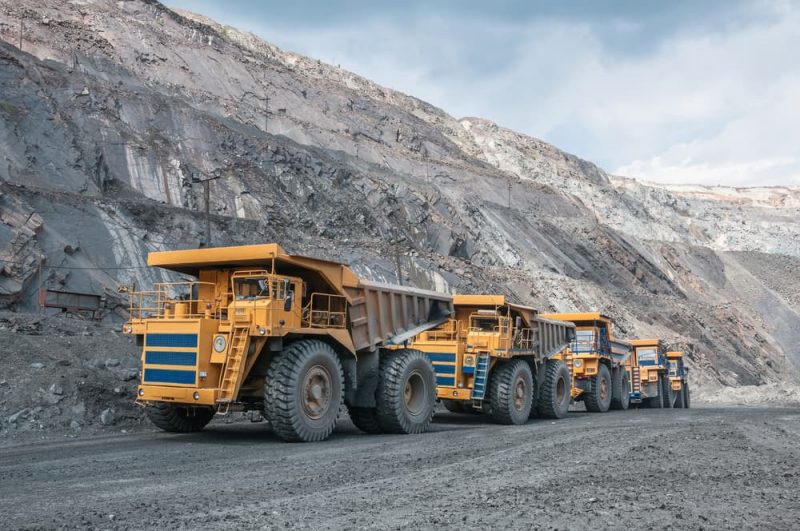The binding materials They are simple or compound substances that have adhesive properties and that, when mixed with water, can form a mixture with other materials and provide cohesion to the whole through processes of a physical nature. For instance: plaster, asphalt, tar. If these processes were of a chemical nature, we will then speak of binding materials.
These substances tend to stay in pasty state except in specific conditions of contact with water, air or temperature change: then they proceed to solidify and form a uniform and homogeneous solid.
Are widely used in construction and civil engineering, both in the construction of buildings, roads and all kinds of structures, as well as in masonry and ceramics.
Types of binding materials
There are three types of binders, according to what they need to become solid matter:
- Aerial. They harden in prolonged contact with air, since they lose their moisture content. They are not very resistant to water.
- Hydraulics. They harden in contact with or submerged in water, since they regain an essential amount of moisture.
- Hydrocarbons. They harden due to a change in their level of viscosity, product of the variation in temperature.
Examples of binding materials

- Cast. One of the ways to obtain plaster is through the total or partial hydration of the pumice or aljez stone, after being ground, baked and calcined until dehydration. It is then cooled and reduced to a more or less desiccant white powder, which can then be mixed with water to set and harden fairly quickly. It can also be mixed with other components. There are three types of plaster: white, black, and plaster.
- Lime. It is the product of the calcination of limestone rocks into what is called “quicklime” (calcium oxide, CaO) through the action of heat (more than 900 ° C). This calcination is necessary to completely dehydrate it, but results in a powerful desiccant and oxidant, which must then be hydrated (slaked) to obtain usable matter. The lime is kneaded with water, in a reaction that gives off heat, and mixed with sand, it forms what is known as “lime mortar”. Thus, using slaked lime, powdered marble and other components, a paste called “stucco” is obtained, widely used in painting and correcting walls, as well as in covering exterior walls.
- Cement. It is a vitally important conglomerate in the construction industry. It is made up of a mixture of calcinated and then ground limestone and clay, called “clinker”, to which gypsum is added to turn it into cement. This resulting dry gray powder is kneaded with water, hardened, and a stony consistency is obtained.
- Concrete. It is also known as “concrete”, it is a fundamental material for construction, used to build the most important buildings, also used together with iron or steel rods (reinforced concrete) to provide structure and support to the final work. It is a uniform, plastic and malleable mixture of cement, gravel, sand and water, which, when hardening, acquires stony resistance.
- Tar. It is a bituminous, viscous liquid, of dark color and strong odor, obtained from the destructive distillation of organic matter, either by hydrocarbons or by remains and residues. It is a uniform mixture of different organic substances, which is often used as a sealant since drying becomes a waterproof film, especially in road paving.
- Magnesia. It is a hydraulic binder that, according to German documentation, is composed of caustic magnesia (Mg (OH)2) and magnesium chloride (MgCl2), a mixture called: “sorel cement”.
- Asphalt. Asphalt is a viscous, sticky and lead-gray material that, mixed with gravel and / or sand, allows paving roads and highways. It is part of the heaviest fraction of crude oil, so it also serves as a waterproofing or sealant, since it is not water soluble. Once solidified, it is capable of withstanding great efforts and of avoiding water seepage to a large extent, which makes it ideal to last over time.
- Bitumen. It is a dense mixture of organic substances, composed mainly of aromatic hydrocarbons. It is a black, viscous liquid, soluble in carbon disulfide and not in water. Being a form of pitch, it is used as a waterproofing agent or, together with gravel or sand, as an aggregator for paving roads, just like asphalt. In some cases, it is considered synonymous with tar.
- Mortar. It is a mixture of inorganic binders, which serves as a glue for building materials such as bricks or blocks, and as a bonding material or wall covering, in masonry. Historically it has been displaced by cement, but it is still used in many localities. It is manufactured with fine aggregates, binders and water, so its consistency is particular and requires a different mixing than concrete.
- Stucco. Stucco is a fine-grained paste, made from slaked (hydrated) lime, powdered marble, plaster, and natural pigments. When it comes into contact with air, the calcium hydroxide it contains reacts chemically with carbon dioxide and, due to this reaction, the material hardens. This allows for modeling, carving and polishing, which makes stucco a versatile material in construction and in artistic or decorative work.
